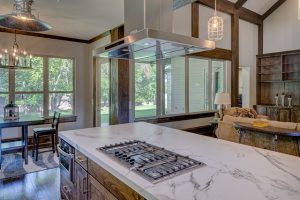When it comes to kitchen upgrades, few decisions impact your daily routine and the long-term value of your home as much as the countertop. It’s where meals are prepped, groceries are unloaded, and family moments unfold. Selecting the right surface isn’t just about looks—it’s about balancing durability, maintenance, cost, and how your household actually uses the kitchen.
Below is a practical, experience-based guide to help you choose a countertop that truly fits your lifestyle.
1. Start with How You Live, Not Just How It Looks
The first step is understanding how your kitchen works day to day. Do you cook frequently? Have kids who do homework or crafts on the counter? Do you host guests often?
-
High-use kitchens need strong, low-maintenance materials like quartz or granite.
-
Occasional-use or show kitchens can handle softer options like marble or butcher block, which require more upkeep but offer timeless beauty.
Your countertop should work with your habits, not against them.
2. Know Your Material Options
Each material has distinct strengths and weaknesses:
-
Quartz: Engineered for durability, quartz is non-porous, resists stains, and doesn’t require sealing. It’s ideal for busy families who want easy maintenance.
-
Granite: A natural stone with unique patterns, granite adds character and value. It’s heat-resistant but needs periodic sealing.

-
Marble: Luxurious and classic, marble develops a patina over time. It’s prone to etching and staining, so it suits lighter use or owners who appreciate its evolving charm.
-
Butcher Block: Warm and organic, wood counters are perfect for a cozy, inviting feel. They need oiling and care to prevent water damage but can be sanded and refinished.
-
Solid Surface (like Corian): Seamless and customizable, these resist bacteria but can scratch more easily than stone.
-
Concrete or Porcelain: Sleek and modern, these materials handle heat well but may need professional installation and sealing.
3. Factor in Maintenance and Longevity
Countertops live a hard life. Spills, knives, hot pans, and cleaning products all take a toll. Choose a surface you can realistically maintain.
If sealing or oiling sounds like a chore, skip porous materials. If you love the idea of restoring natural finishes, marble or wood might be perfect.
4. Don’t Forget the Details
Think about edge profiles (rounded edges resist chipping better), backsplash coordination, and color tone relative to your cabinets and flooring. Lighter counters can brighten small kitchens, while darker shades add contrast in open spaces.
5. Balance Budget with Value
While laminate remains the most affordable option, investing in higher-quality materials often pays off in both durability and home resale value. Just ensure your choice aligns with the overall value of your home—an ultra-luxury countertop in a modest kitchen can look out of place.
Final Thoughts
The “right” countertop isn’t universal—it’s the one that fits your household’s rhythm, design goals, and willingness to maintain it. Take time to compare samples in your actual lighting and envision how the surface will age with your family’s routines. A well-chosen countertop will not only serve as the heart of your kitchen but also stand the test of time—beautifully and practically.








